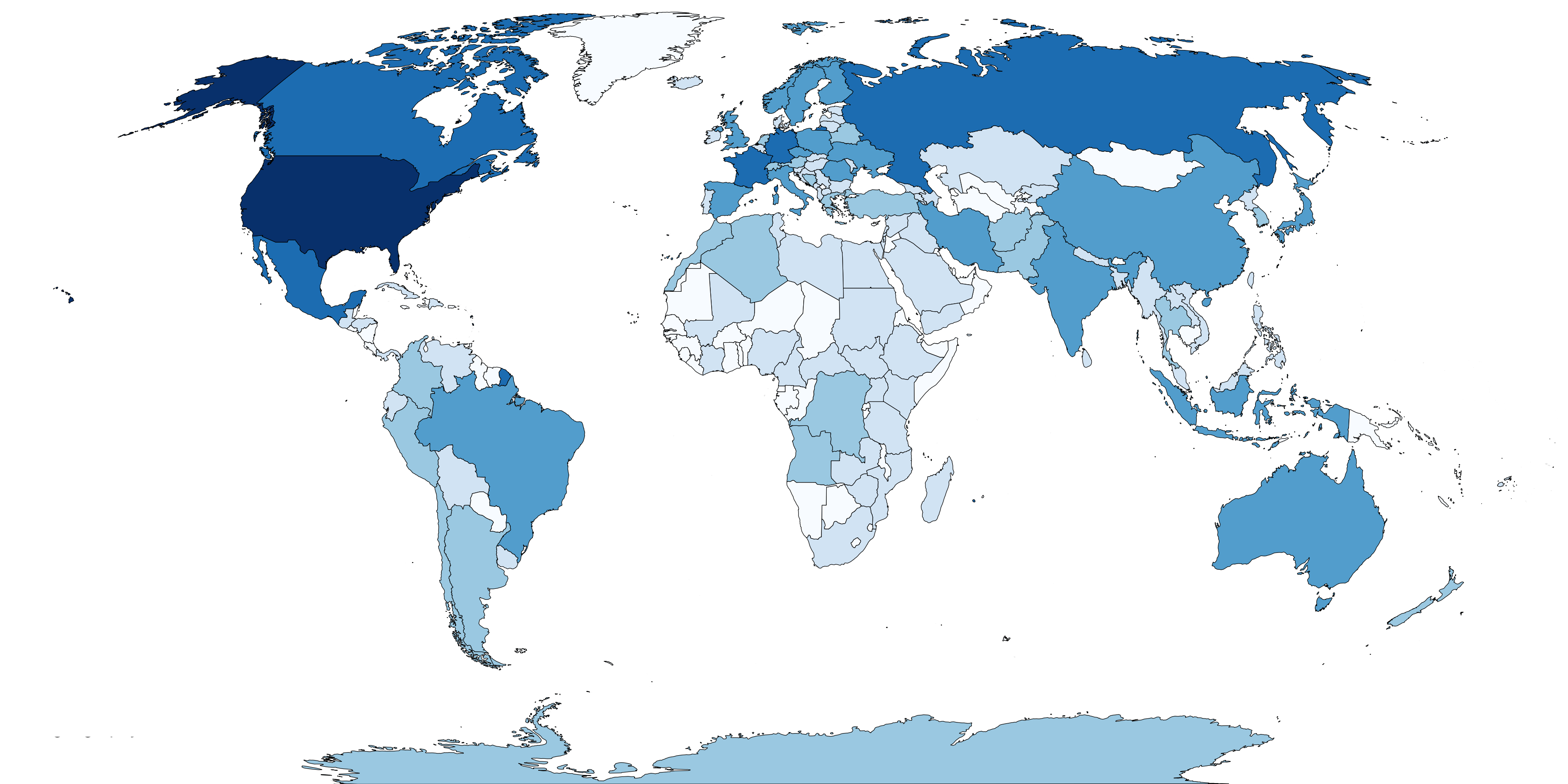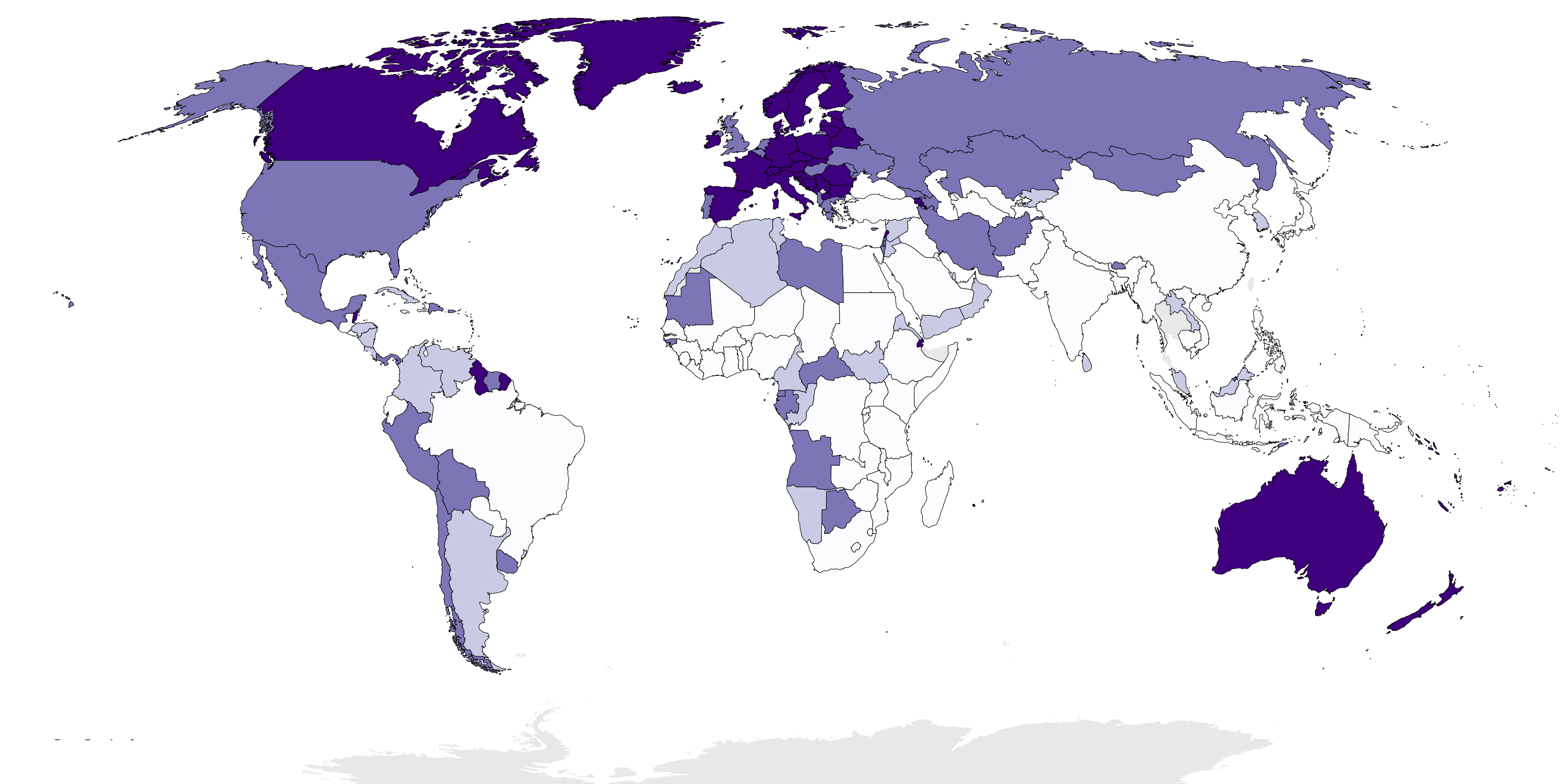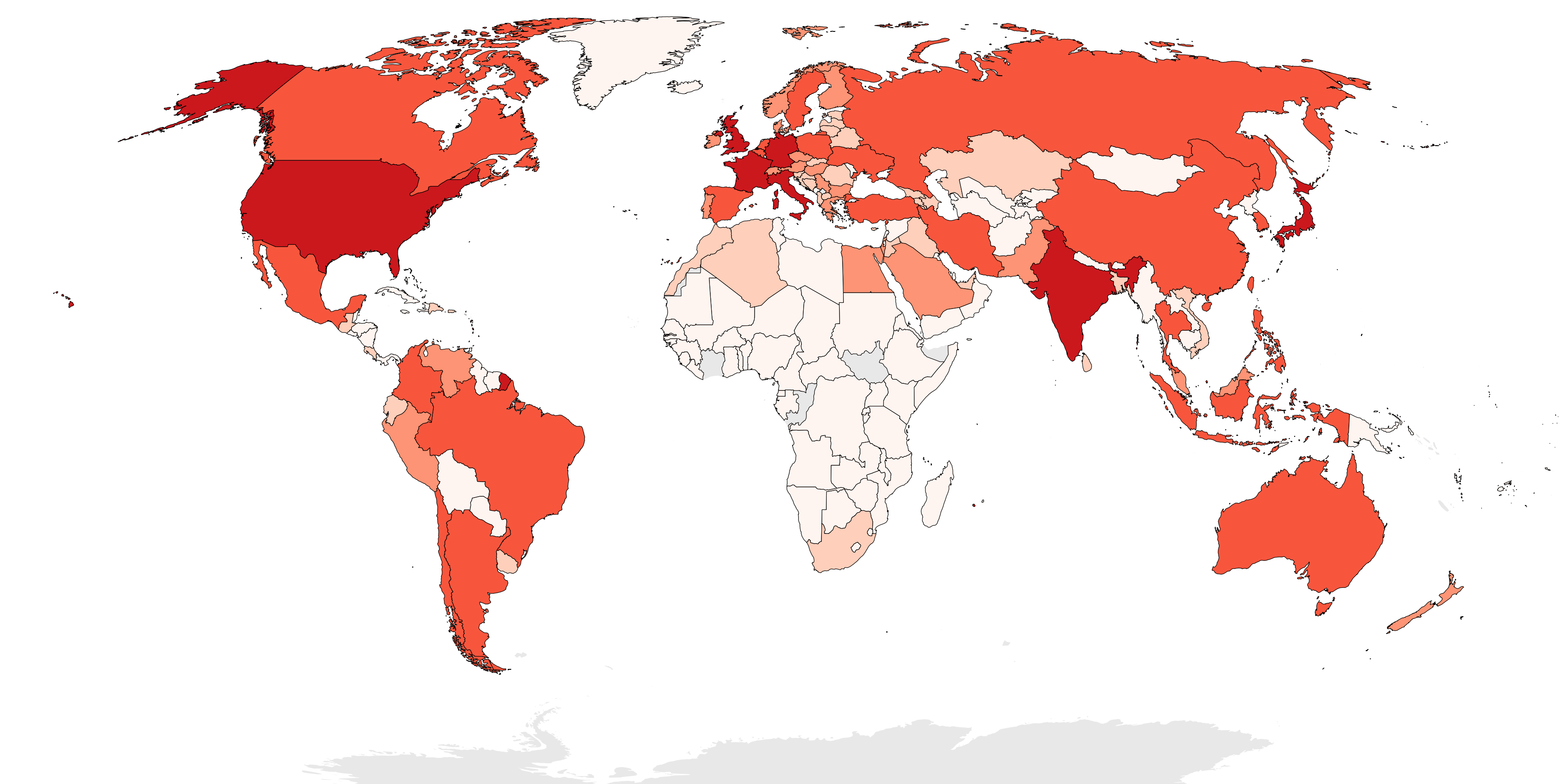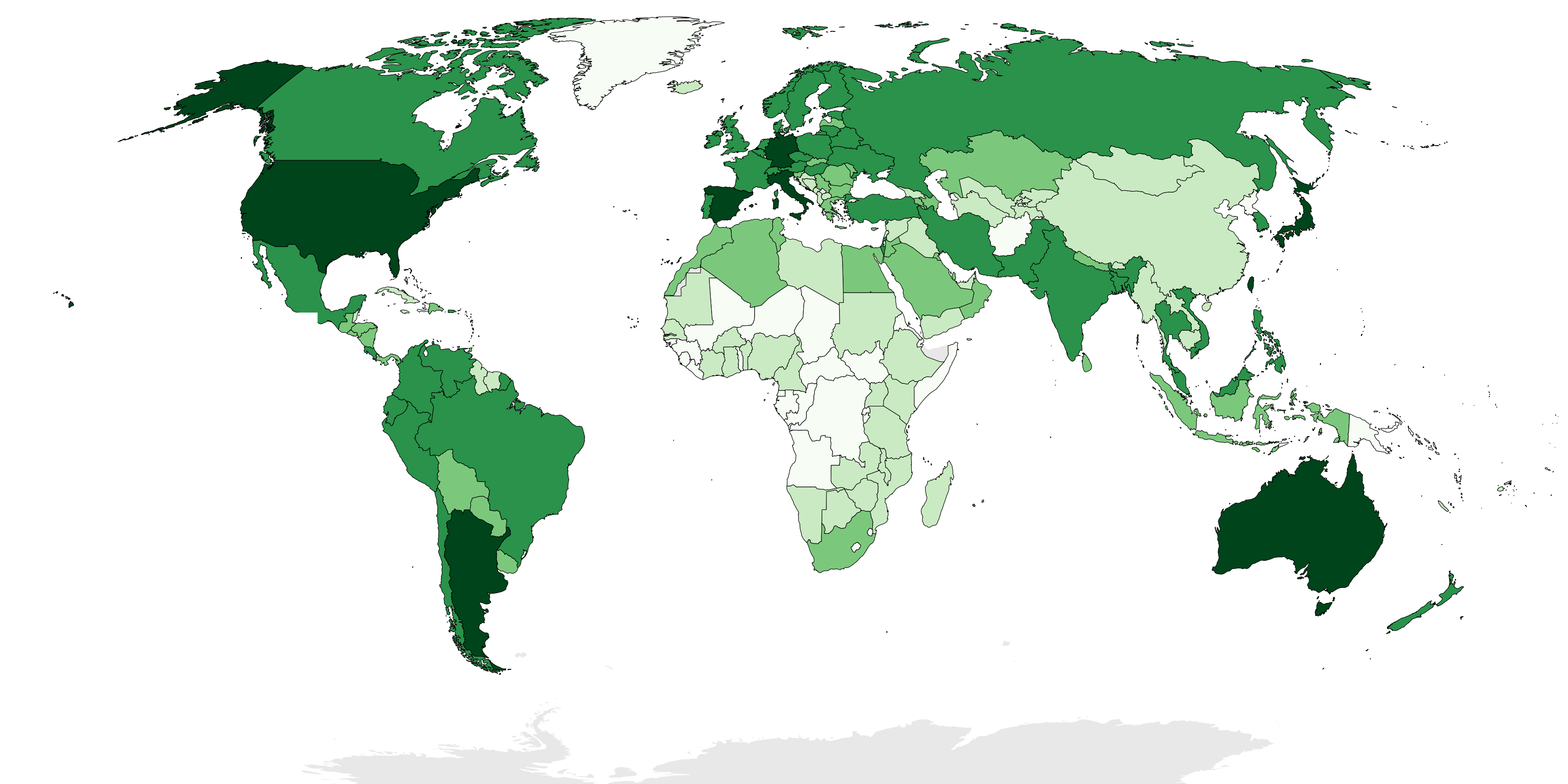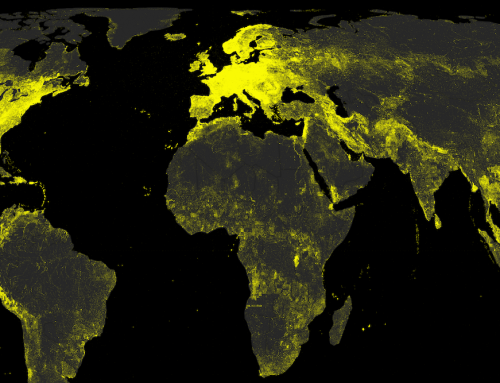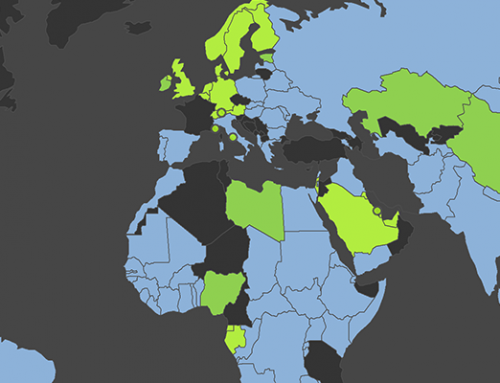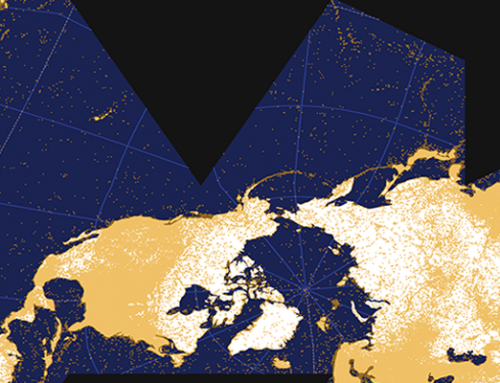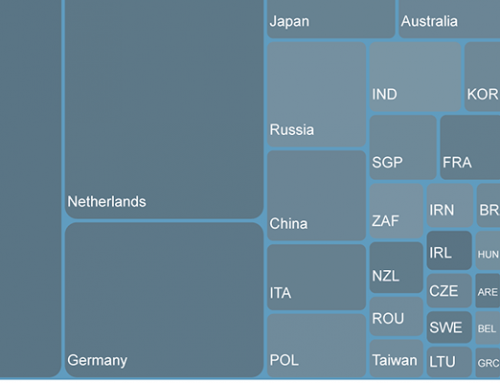(Click to see full image)
In our research we examine both the places about which augmented digital is produced, and who is producing it. We do this with a particular focus on how ICTs might enable new geographies of knowledge in and about some of the world’s most disadvantaged places. Throughout this work we are finding that the production and consumption aspects of such augmentations are self-reinforcing: the uneven geographies of information on today’s online platforms shape what is known and what can be known, which in turn influences the myriad ways in which knowledge is produced, reproduced, enacted, and re-enacted. As a consequence, as people increasingly engage with digital practices of technology and information usage, augmenting our material worlds with digital content, a new space opens for more locally relevant information about the parts of the world we have not yet experienced ourselves. Who produces these digital representations of place?
Arguably, the largest, most used, and most influential single web platform on which people are creating layers of information about our planet is Wikipedia. In August 2018, the text of the English Wikipedia is equivalent to 2,700 volumes of the Encyclopedia Britannica. On any given day, 15 percent of all Internet users access it. It exists in over 300 languages; 60 of those language versions have over 100,000 articles, and the English one alone contains close to six million.
And yet, representations within the platform are also highly uneven. In the map above, the shade of the countries indicates the total number of Wikipedia articles written about each country (i.e. articles about cities, battles, parks, festivals, monuments, buildings, etc.). We can see that some parts of the world are characterized by highly dense virtual representations, while others are barely represented at all. The relative absence of Africa is quite notable here. Africa has almost twice the population of Europe, and yet only 15 percent the number of articles. Maybe even more shocking is the fact that there are more articles written about Antarctica than most countries in Africa, and many in Latin America and Asia.
The map above displays the number of articles per person in each country (with dark shades representing more articles per person and lighter shades indicating fewer per person). We see that Europe, in particular, has a lot written about it on a per-capita basis. Most of Africa, Asia, and South America, in contrast, is characterized by only a small number of articles per person. Although one of Wikipedia’s mottos is “to contain the sum of human knowledge,” we see that we are far from that important goal.
Importantly, we are able to see clearly that not only are there uneven data shadows over much of the world, but that these data shadows are produced in uneven ways. The map above displays the number of average monthly Wikipedia edits that emanate from each country in 2014. We see distinct digital divisions of labor. Africa, for instance, produces only a small amount of the content in Wikipedia (the entire continent combined has slightly fewer edits than the Netherlands, and only 7% of the edits that emanate from the US). Unbalanced digital divisions of labor exist in other parts of the world as well. Israel and Iran taken together, for instance, contribute more to Wikipedia than the remaining 20 countries in the Middle East and North Africa put together.
In other words, not only are African countries and other global regions underrepresented in terms of content (number of articles) and participants (contributions by local editors), the contributions that do exist are largely produced externally, by people from outside these countries. This raises the question whether such representations are significantly shaped by outside perspectives rather than based on local knowledge, and how this may lead to distortions.
Informed by the recognition of these imbalances, the Wikipedia community has embarked on a significant shift in strategic thinking. Its strategy document for 2017 expresses a commitment to counteract structural inequalities by providing support for underrepresented groups, and by addressing barriers to participation. It introduces the concept of “knowledge equity”, expressing the idea that everybody should have the opportunity to participate in the creation of knowledge, and that communities around the world should have the capacity to make decisions about how they are being represented online. In doing so, Wikipedia has recognised that some local communities will require more support than others. Some of this support may come from diasporic communities, people who have emigrated to other parts of the world. India and China in particular benefit from a significant global diaspora that is actively contributing Wikipedia content about their home country. Further important support is provided by concerted efforts such as Wiki Loves Africa and WikiProject China which seek to improve representations of specific regions of the world, as well as the growing number of projects that seek to counteract Wikipedia’s systemic bias. Although inequities remain, efforts such as these are helping to close the representation gap, and Wikipedia is starting to better reflect the world we live in.
Visualization and analysis by Prof. Mark Graham and Dr. Martin Dittus in 2018. This post includes excerpts from “Internet Geographies: Data Shadows and Digital Divisions of Labor” by Mark Graham, Sanna Ojanperä, and Martin Dittus from the upcoming second edition of “Society and the Internet: How Networks of Information and Communication are Changing Our Lives”, edited by Mark Graham and William H. Dutton, to be published at Oxford University Press.
For related work, see:
Ojanperrä, A., Graham, M., Straumann, R., De Sabbata, S., and Zook, M. 2017. Engagement in the Knowledge Economy: Regional Patterns of Content Creation with a Focus on Sub-Saharan Africa. Information Technologies and International Development. 13. 33-51.
Graham, M. 2017. Digitally Augmented Geographies. In Understanding Spatial Media. eds. Kitchin, R., Lauriault, T. P., and Wilson, M. W. London: Sage. 44-55.
Graham, M., Straumann, R., Hogan, B. 2015. Digital Divisions of Labor and Informational Magnetism: Mapping Participation in Wikipedia. Annals of the Association of American Geographers. 105(6) 1158-1178. doi:10.1080/00045608.2015.1072791.(pre-publication version here)
Graham, M., De Sabbata, S., Zook, M. 2015. Towards a study of information geographies:(im)mutable augmentations and a mapping of the geographies of information Geo: Geography and Environment.2(1) 88-105. doi:10.1002/geo2.8
Graham, M. 2013. The Virtual Dimension. In Global City Challenges: debating a concept, improving the practice. eds. M. Acuto and W. Steele. London: Palgrave. 117-139.
